Marie Casimir
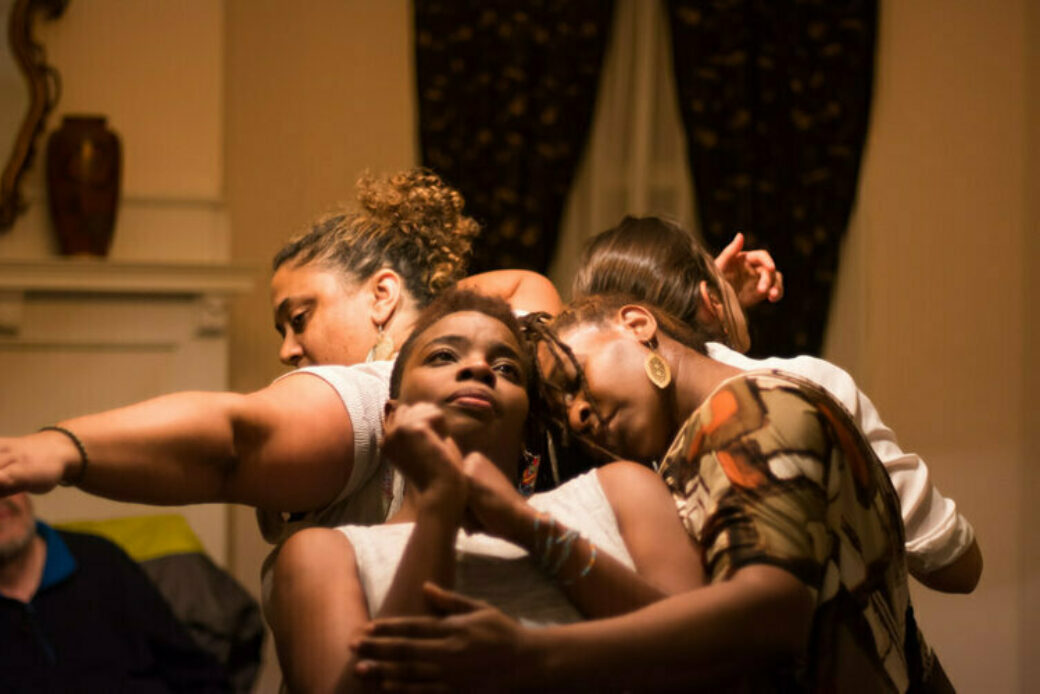

Marie Casimir

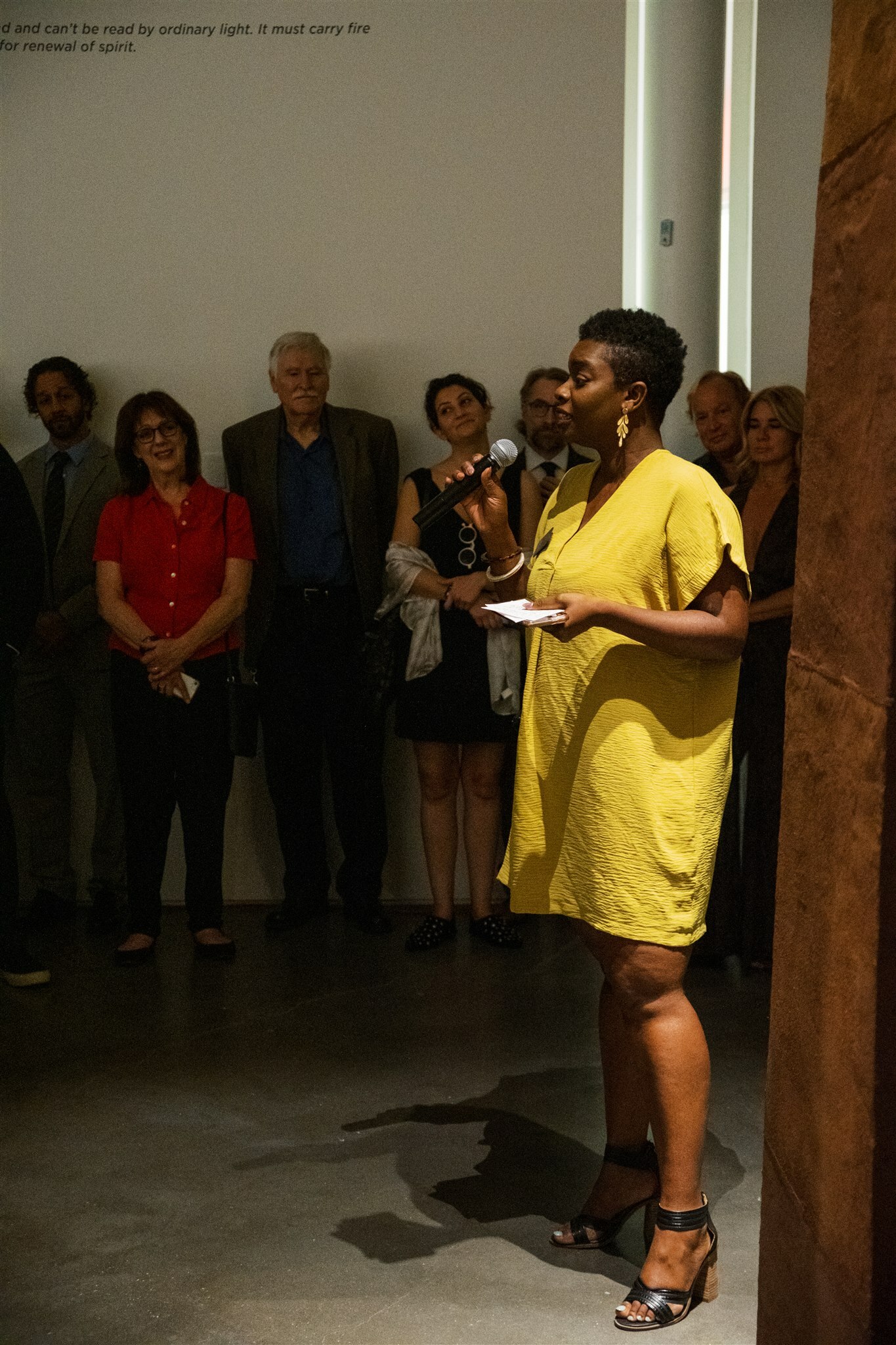
Curator of Public Programs and Performance Marie Casimir
In three years at our new home, Oklahoma Contemporary has showcased world-class performances in dance, theater, music and more. From partnerships with Virtuosi Chamber Orchestra, Painted Sky Opera, Oklahoma City Repertory Theater and Oklahoma City Ballet to commissioned new works (like YIELD: We Belong to the Land) more Oklahomans than ever have the opportunity to see contemporary performances. We’ve also engaged with our community in intentional ways through free public programs, whether it’s a Community Conversation with artists and makers or a relaxed night on the terrace.
These moments are created by people like Curator of Public Programs and Performance Marie Casimir. If you know Casimir, you know the immense amount of heart she puts into every piece. Her 14 years of experience span writing, producing, acting, dancing, directing, curating and more; her passion for engaging artists and community members surpasses metaphorical borders.
Dive deeper into the multitalented curator’s journey through the arts, her path to Oklahoma and the contemporary wave moving through the city, helped by Casimir-planned performances and programs.
What is your relationship to dance and theater?

Joseph and the Amazing Technicolor Dreamcoat
I grew up outside New York City. When I was in middle school, we had this theater called Helen Hayes Theater (which has a different name now), but Helen Hayes Theater was off, off, OFF Broadway, all the way off. *laughs* I was in a production of Joseph and the Amazing Technicolor Dreamcoat, which was great. I loved that show — I still remember all the words! We were the children’s chorus, and the original Annie, Andrea McArdle, was the narrator as one of the leads. That was the first time I was probably in a professional show, as a middle-schooler, and I thought, “This is cool. This is it. I want to do this when I grow up!”
So I sort of stayed on the path: I was Miss Adelaide in Guys and Dolls, did some dramas, had some really great dance numbers and little parts that were written in for me. I then went on to college for journalism and art history at Ithaca College. It was just a different form of storytelling, storytelling about the human experience.
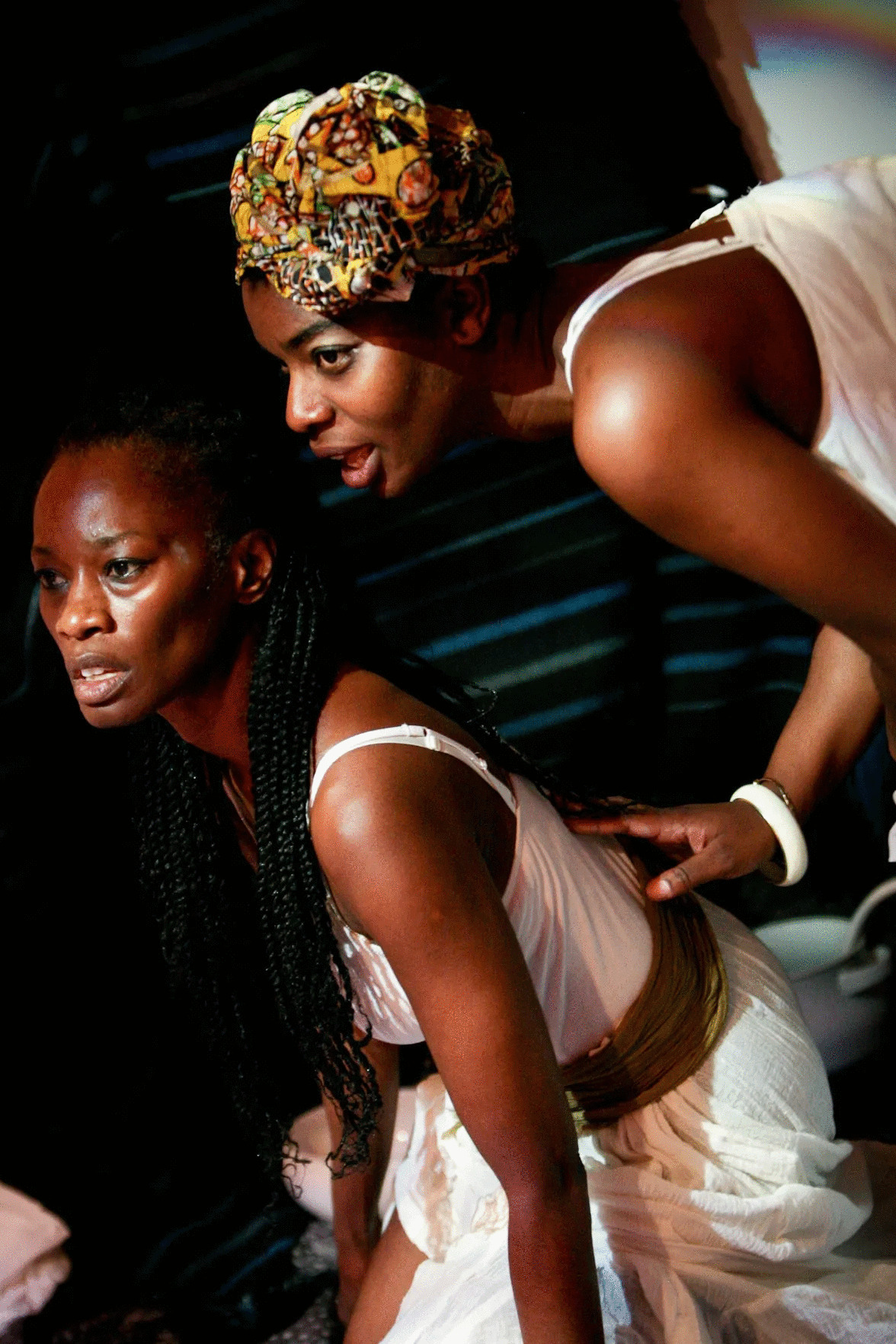
Casimir performing in River See (2013)
I think I was afraid to commit to the idea of being an artist, being a full-time artist. And I didn’t think my parents would approve of me going to study something like acting or dance, because we’re Caribbean. *laughs* They’re like “Go be something useful!” My brother’s a lawyer, my sister’s a nurse, you know. I actually think, had I pushed harder, they would’ve been supportive, because they really were always supportive of the arts. I was performer growing up, and they were always supportive of that. But I was too nervous of breaking the status quo, the expectations they had for me.
But when I was in college, I acted in student films, I was on a TV show, took dance classes and took theater theory classes, along with art history, which was really exciting for me. So I was nursing it along the entire time. I have this degree, but I’m also doing the thing I love and want to do.
After college I moved to Chicago and started working at the CSO, Chicago Symphony Orchestra, in a basement with no windows, calling people for donations and subscriptions. I graduated in ’07, and the bottom fell out. Newsrooms were cutting back, and I just wasn’t really sure, so I thought “Maybe I’ll figure out this journalism thing in a different way.”
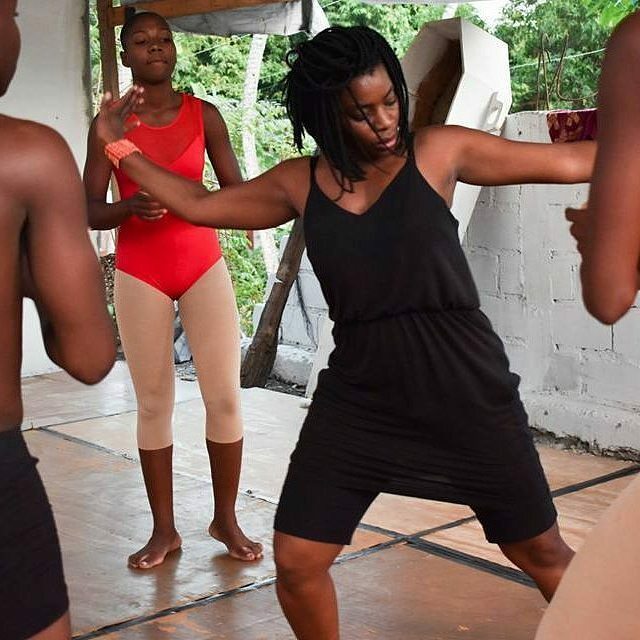
Casimir at an artistic exchange with Links Hall and Haitidansco in Jacmel, Haiti
Then I started dancing again. I was in a piece which was at Links Hall, an experimental performance space. I was an android in an experimental piece by Julia Miller, a future founder of the puppet company Manual Cinema. I really loved that space, asked if I could volunteer and told them I had a journalism degree, so I could work in communications. I became the communications associate after volunteering for a while, then became the communications director. Dance, theater, puppetry, cabaret, all kinds of things — it’s one of the most important experimental spaces in Chicago. Having been a performer there, and then volunteering and getting a new job, I ended up helping move a 30-year-old organization to a new space with multiple studios, helping create a strategic plan, all while performing while I was there and taking workshops
Essentially, I got a lot of my theater and performance education and also arts admin education on the job. And not just in that space I worked, but that entire city became my classroom. So I really have a lot of what I have today just by doing it and learning from people, mentors, auditing classes. I don’t have an MFA, I have an MA in nonprofit administration with a concentration in arts admin, and that feels a little weird in the spaces I’ve been in. But based on my body of work, it’s life experience. I just made it — I turned Chicago and other cities I’ve worked into my classroom. MFA in life!
Tell us about your journey to Oklahoma.

Casimir and Instigation Festival partner Steve Marquette
My husband took a job in OKC, and, at that point, I had been working for seven years at Links Hall. We had a different show every weekend, we were a rental house, a residency space — there was something constantly happening all the time. I was associate director and had developed skills as a programmer, and, after seven years, when Brad told me about the job opportunity, I said, “Yes, that sounds great. I could use a change of pace.” I was getting ready to start a festival in Chicago and New Orleans, an improvisational dance and music festival called Instigation Festival, that I still run with my partner Steve Marquette. I knew as an artist, a maker and producer, I needed some quiet time to reconfigure and refocus. Moving to Oklahoma afforded me that, and it became like a residency.
When I moved here, I didn’t get a job right away. I just worked on my festival, which was great and launched in two different cities. I began to travel between Oklahoma, New Orleans and Chicago, and the fact that it’s affordable to live here made it possible for me to able to do that. So I thought, “Yeah, I could live here, participate in what’s happening here, learn what’s happening in Oklahoma while also traveling and go elsewhere.”

Casimir's First We Dance
I had a residency at SixTwelve, which was wonderful, and that’s when I really came back to programming here versus outside of the city. I worked to program dance — it was a food and dance program, and that was reminiscent of some of the things I used to do in Chicago. I was also teaching at the University of Oklahoma as an adjunct lecturer in the African and African American Studies department; I was teaching African dance as well as sometimes working with World Literature Today.
Then the pandemic hit. And that was really tough. It was really difficult to be all the things. And I loved my students, I loved teaching, and, like most other people, we went through difficult times together. It wore me down a little bit. But in addition to academia, the thing I love to do is put on a show, put on a program and help artists with the seed, the idea, and then see it to fruition. That’s beautiful to me. I love the experience. And I missed that. I had been doing that through my festival, but I had been doing that elsewhere and here occasionally. There was nothing that was consistently contributing to the culture here, and Oklahoma Contemporary, that was attractive, being able to do that. And it was in the brand-new space, which means that the program was still developing. When I interviewed here, I thought it was a really special opportunity to help shape something in its nascent form.
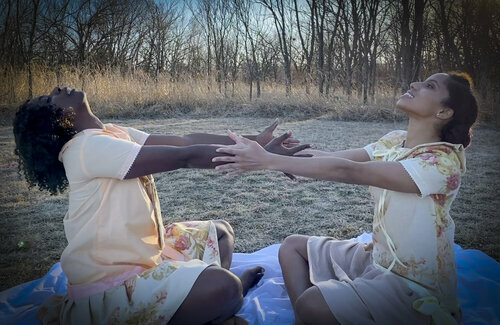
Casimir and co-choreographer J’aime Griffith
I moved here in 2016, and, in a short amount of time, I’ve really watched things bloom and expand. Whenever you’re a guest, a transplant — because at some point I felt like a guest in Oklahoma — you always want to be aware that there are many things that happened before you. I have a lot of friends who are artists whose families have been here for multiple generations, so I have some understanding of things that have existed here before. But I don’t know the whole history, and I want to be mindful and acknowledge that people have been doing interesting things here this entire time. Now, there’s a forward momentum happening where people are investing. What’s happening at Oklahoma Contemporary, Factory Obscura, the Ballet and even Oklahoma Mural Syndicate and With Love. Community coming together, like the Juneteenth on The East festival that I was a part of helping to start and SPARK!, there are lots of new projects happening. It feels like OKC is having a moment. And Tulsa! With the Tulsa Artist Fellowship, we get to exchange with the two cities. So I think Oklahoma — I hate to use the word renaissance — but it feels like we might be having an artistic renaissance. It feels good to be able to participate and contribute to that in some way.
As the curator, what public programs and performances have you most enjoyed? What are you most looking forward to?

Casimir's Notes on Survival (2021)
In working here, I try to think about the different communities of people who we want to have access to programs and who we want to feel like we are an inclusive space for as many people as possible. I think what sometimes (results from that) can be watered-down programming. Oftentimes, institutions will be like, “We’re for everybody, we’re for all.” And that’s true, we are for everybody and we want everyone to come. But sometimes, you have to do programming that’s really targeted and specific, whether that’s race, gender, sexual orientation or interest, interest that isn’t tied to identity, like Experimental Music. So then you appeal to a cross-section of people.
Now, there are programs that I have that maybe aren’t as specific, because we need that as well. But I try to lead with really seeing people and seeing what people might be interested in and need. And also what I am interested in, right? Because I’m programming from my lens and my viewpoint, so if I’m really jazzed or interested in something, chances are there are people out there like me. That’s the job of the curator, to make decisions based on their own personal taste but also to consider the larger community and what is needed. Sometimes I add programming that I feel is missing from the conversation. We did Tea with our Afghan Neighbors, which felt really important, because I hadn’t seen that happen yet. The organizers from Spero told me they think that was the first time a program like that had happened for the community and how useful and impactful that was. So when I make decisions about curating, I try to think of that: What is missing? What is needed?

YIELD: We Belong to the Land (2022)
I really loved the partnership we had with SPARK! In addition to Nicole Poole really working in a different way than I think a lot of companies or organizations have worked artistically, where she really gives a lot of creative license to those she was working with, they were also regularly in our space. There were about 10 weeks where they were here, making, in our space, and workshops open to the public. She and I developed the schedule and the idea of that program together, and that felt really good because it felt like we were opening our doors to different artists. I also love our partnership with Oklahoma City Repertory. Through their programming, we’re bringing in some world-class artists, the production value is really high and it’s all new work. I’m excited for people in OKC … to be able to see work here that you would typically on a coast. There’s nowhere else really supporting that kind of work in town, so that feels really special.
I also really loved working with artist Grace Franklin, OKC Artists for Justice, for Sanctuary Redefined and seeing the type of work she was able to make. She was an artist that had a performance at Oklahoma Contemporary before it was in this space, and being able to welcome her back and give her additional resources and help her scale her performance up, that felt really valuable.
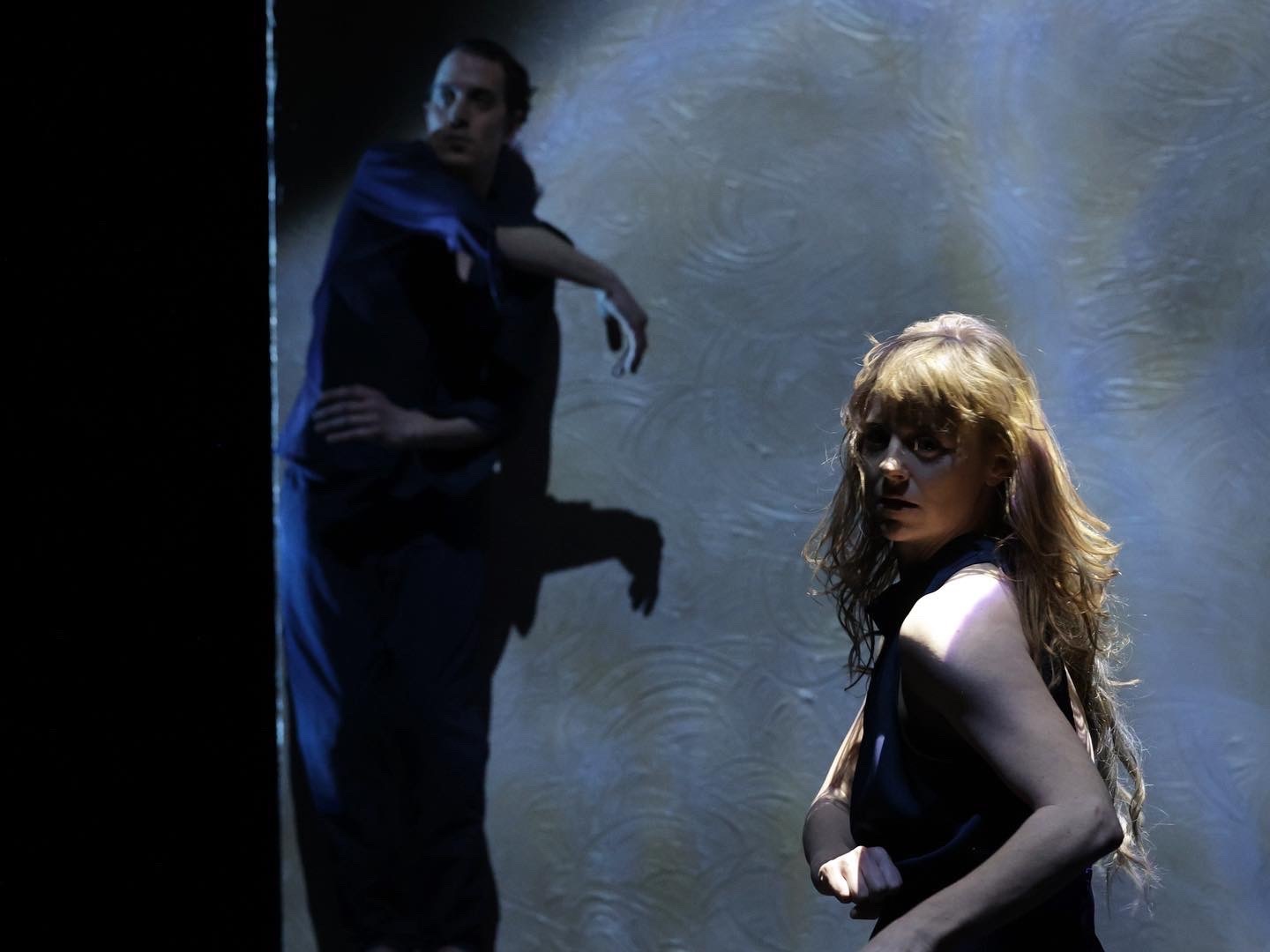
SQUID (2023)
And then, of course, SQUID. SQUID was fantastic. Leslie Krause, co-choreographer and director, and I had early conversations about what that would like and sound like and feel like for the audience and the dancers. That was a work that was commissioned, so for me, it’s great to be able to be at the beginning process and then help imagine something wonderful and immersive and experimental for the audience. La casa was also wonderful, working with Claudia (Cisneros) was incredible, as she’s so thoughtful and generous as an artist.
There’s a performance-lecture titled Thanmejel by Kite, who is featured in ArtNow, which I’m looking forward to. The piece is layered and includes a visual score, deriving ideologies from traditional Lakota artmaking, geometric designs, video and dream narratives. And of course, the music series! This is a way we can invite people to just be. Hang out on our terrace, experience music from artists who are performing around town. We’re trying to create a vibe — if you aren’t necessarily coming for contemporary art, maybe you’ll come for the music, and maybe you’ll check out the contemporary art. That’s the idea of, “How many different kinds of people can we welcome into our space?” Plus in August, we are partnering with the With Love organization for a performance and speakers in honor of the 65th anniversary of the sit-ins led by Clara Luper. That will be led by hip-hop artist/activist Jabee, partnering with different artists. So, we’re busy!
If you catch Casimir at a show, program or event, be sure to say hello and thank you — and share your ideas (she loves to hear from our community)! Check out the upcoming programs, including Thursday’s first Summer Music Series concert!
Images:
Marie Casimir during Instigation Festival 2018 at The New Quorum. Photo: Dennis McDonough.
Casimir speaking after a performance at the opening of ArtNow: The Soul Is a Wanderer. Photo: AJ Stegall.
Joseph and the Amazing Technicolor Dreamcoat.
Casimir performs at the premiere of Sharon Bridgeforth's River See (2013) at Links Hall. Photo: Dan Plehal.
Casimir at an artistic exchange with Links Hall and Haitidansco in Jacmel, Haiti. Photo: Links Hall.
Casimir and Instigation Festival partner Steve Maruqette. Image courtesy Instigation Festival.
Casimir's First We Dance (2019-2020) at SixTwelve. Photo courtesy the artist.
Casimir and co-choreographer J’aime Griffith in I Dream of Greenwood (2021). Photo: World Literature Today.
Casimir's Notes on Survival (2021). Photo: Matt Miller.
SPARK!'s YIELD: We Belong to the Land (2022). Photo: Iasiah G. Pickens.
SQUID (2023). Photo: Alexander Petit Olivieri.
Return to New Light.
Monday 11 a.m. - 6 p.m.
Closed Tuesday
Wednesday 11 a.m. - 6 p.m.
Thursday 11 a.m. - 9 p.m.
Friday - Sunday
11 a.m. - 6 p.m.
see additional holidays
Visit us at
11 NW 11th St.
Oklahoma City, OK 73103
Phone: 405 951 0000
Fax: 405 951 0003
info@okcontemp.org
SEND MAIL TO
Oklahoma Contemporary
P.O. Box 3062
Oklahoma City, OK 73101
STAY UP TO DATE
Join our mailing list to learn about our events, exhibitions, education and more.
©2024 Oklahoma Contemporary All Rights Reserved.